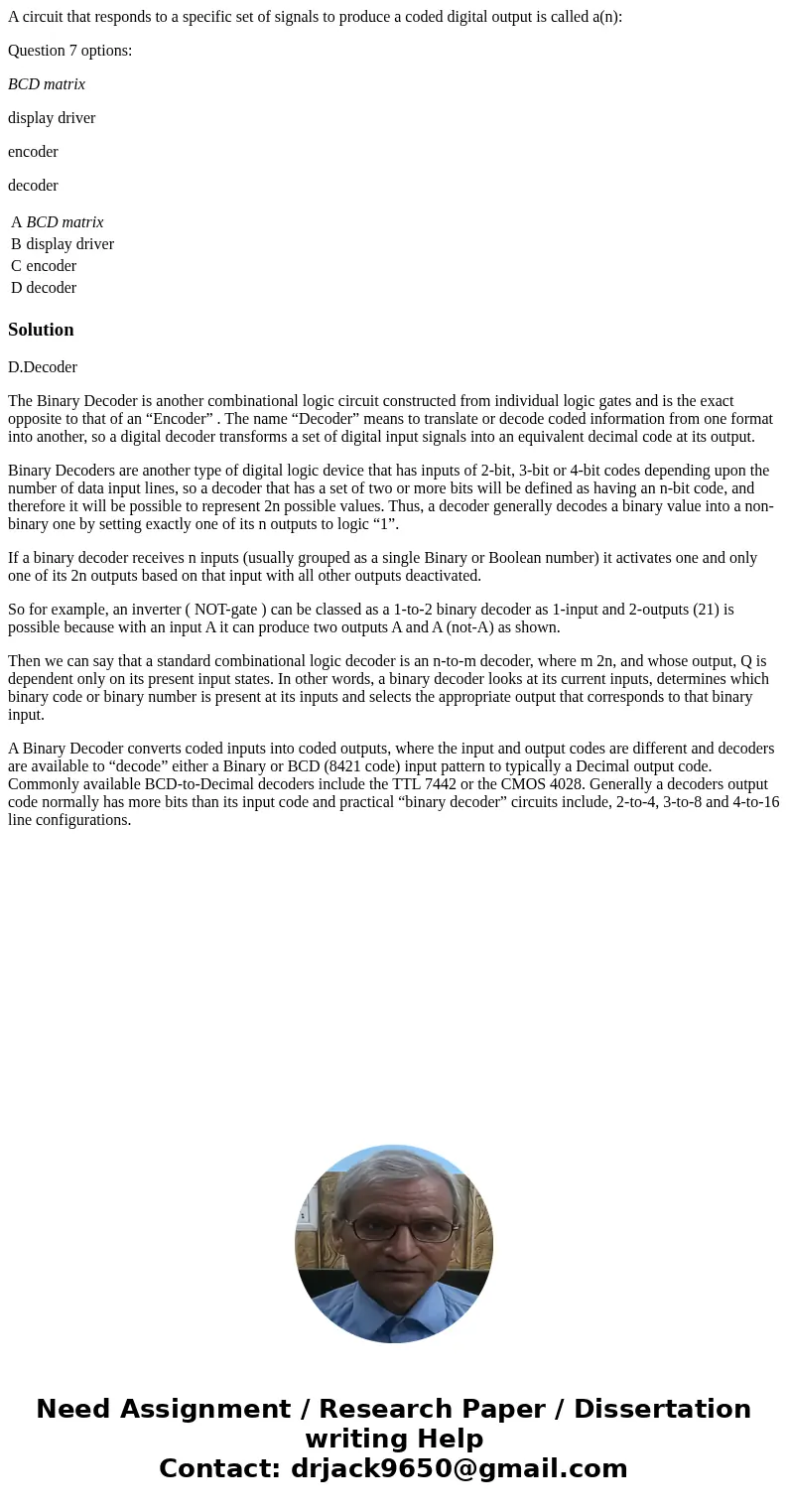A circuit that responds to a specific set of signals to prod
A circuit that responds to a specific set of signals to produce a coded digital output is called a(n):
Question 7 options:
BCD matrix
display driver
encoder
decoder
| A | BCD matrix |
| B | display driver |
| C | encoder |
| D | decoder |
Solution
D.Decoder
The Binary Decoder is another combinational logic circuit constructed from individual logic gates and is the exact opposite to that of an “Encoder” . The name “Decoder” means to translate or decode coded information from one format into another, so a digital decoder transforms a set of digital input signals into an equivalent decimal code at its output.
Binary Decoders are another type of digital logic device that has inputs of 2-bit, 3-bit or 4-bit codes depending upon the number of data input lines, so a decoder that has a set of two or more bits will be defined as having an n-bit code, and therefore it will be possible to represent 2n possible values. Thus, a decoder generally decodes a binary value into a non-binary one by setting exactly one of its n outputs to logic “1”.
If a binary decoder receives n inputs (usually grouped as a single Binary or Boolean number) it activates one and only one of its 2n outputs based on that input with all other outputs deactivated.
So for example, an inverter ( NOT-gate ) can be classed as a 1-to-2 binary decoder as 1-input and 2-outputs (21) is possible because with an input A it can produce two outputs A and A (not-A) as shown.
Then we can say that a standard combinational logic decoder is an n-to-m decoder, where m 2n, and whose output, Q is dependent only on its present input states. In other words, a binary decoder looks at its current inputs, determines which binary code or binary number is present at its inputs and selects the appropriate output that corresponds to that binary input.
A Binary Decoder converts coded inputs into coded outputs, where the input and output codes are different and decoders are available to “decode” either a Binary or BCD (8421 code) input pattern to typically a Decimal output code. Commonly available BCD-to-Decimal decoders include the TTL 7442 or the CMOS 4028. Generally a decoders output code normally has more bits than its input code and practical “binary decoder” circuits include, 2-to-4, 3-to-8 and 4-to-16 line configurations.

 Homework Sourse
Homework Sourse